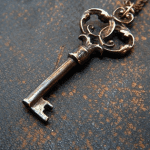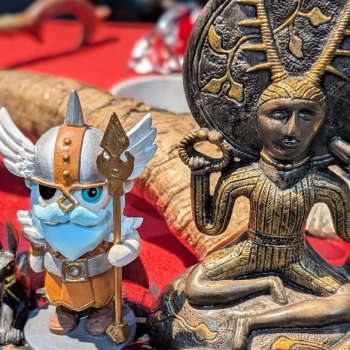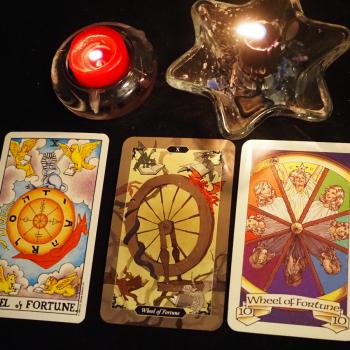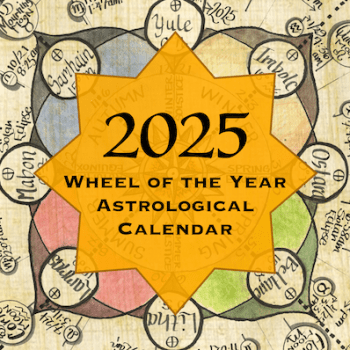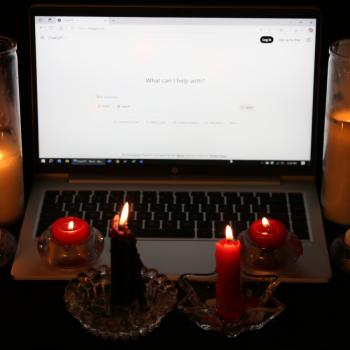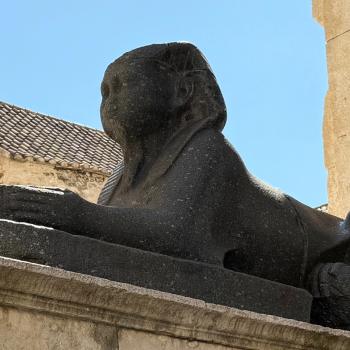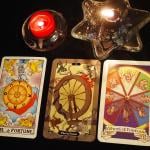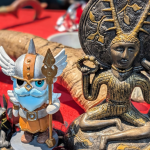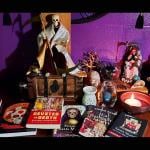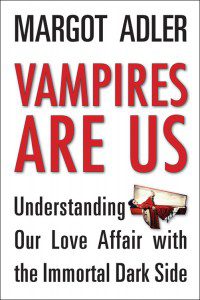 Vampires Are Us: Understanding Our Love Affair with the Immortal Dark Side
Vampires Are Us: Understanding Our Love Affair with the Immortal Dark Side
by Margot Adler
Published by Weiser Books
256 pages
Paperback: $15.06
Kindle: $9.99
I’ve been fascinated with vampires ever since I was rushing home from elementary school to watch Jonathan Frid as Barnabas Collins in the original Dark Shadows. From there it was on to the Universal horror classics: Bela Lugosi in Dracula, Lon Chaney Jr. in Son of Dracula, John Carradine in House of Dracula, and what may be the best movie of them all, Gloria Holden in Dracula’s Daughter.
If I haven’t seen every vampire movie made in the 20th century I haven’t missed many of them. And I’ve read a lot of vampire books: Bram Stoker’s Dracula, Chelsea Quinn Yarbro’s Hotel Transylvania and the next dozen or so in the series, Fred Saberhagen’s reimagining of Dracula as a good guy, and Stephen King’s utterly terrifying Salem’s Lot. And while it didn’t have the impact on me it had on John Halstead, I read Anne Rice’s Interview With the Vampire and several more in that series. And that was just in high school – in the years since the list has grown and grown.
The 1979 version of Dracula is not a particularly good film – the story deviated heavily and needlessly from both the book and from previous films, and director John Badham didn’t do a very good job of telling the story he decided to tell. But for a 17 year old geeky kid struggling to figure out who he was and what he wanted to be, Frank Langella’s Dracula was a dream: the immortality, the power, the wealth, the clothes, the hair – oh, I wanted his hair! He was, in the words of Anne Rice’s Armand, “beautiful, powerful, and without regret.”
Is it any wonder I wanted to be him?
Margot Adler, NPR journalist and author of the hugely influential Drawing Down the Moon (also published in 1979), has a new book exploring our fascination with vampires: Vampires Are Us: Understanding Our Love Affair with the Immortal Dark Side. Margot began reading vampire novels in 2009 when she picked up the first Twilight book (don’t get me started on sparkly vampires!) and ten days later her husband was diagnosed with cancer. He would die after only nine months of treatment. During that time and in the following months, Margot read 270 vampire books. Vampires Are Us is the product of all that reading.
Drawing Down the Moon is 672 pages and could have been longer. Vampires Are Us is a very different book. It’s 256 pages, but only the first 55 are Margot’s ideas about the attraction of vampires. The rest is essentially an annotated bibliography: 1-2 paragraph summaries and commentaries on the 270 books she read. I read it on the plane from DFW to San Jose for Pantheacon and it didn’t take the whole flight.
The central theme of Vampires Are Us comes from Nina Auerbach’s book Our Vampires, Ourselves. Nina wrote “Every age embraces the vampire it needs.” Vampires are far more than immortality or sex – they reflect our innermost hopes and fears.
The vampires of legend and lore are nothing you’d want to be – they resemble the zombies of today far more than our glamorous hero / antihero vampires. They reflected the constant presence of death and disease and the fear of the dead returning to take the living with them.
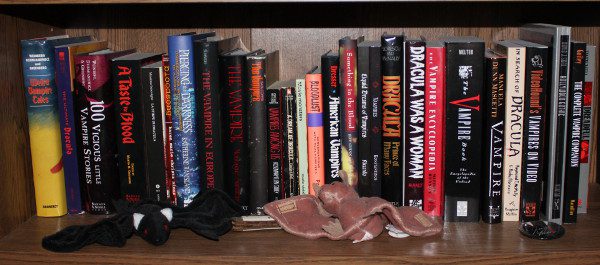 By the time English vampire fiction began in the 19th century, fears had shifted. Dracula (1897) reflected the fear of Eastern European immigrants. Dr. John Polidori’s “The Vampyre” (which sprung from the same storytelling session that produced Mary Shelley’s Frankenstein in 1816) was a thinly veiled attack on his former employer and companion Lord Byron. And both Dracula and Sheridan Le Fanu’s Carmilla (1872) reflected the Victorian fear of sex and sexuality.
By the time English vampire fiction began in the 19th century, fears had shifted. Dracula (1897) reflected the fear of Eastern European immigrants. Dr. John Polidori’s “The Vampyre” (which sprung from the same storytelling session that produced Mary Shelley’s Frankenstein in 1816) was a thinly veiled attack on his former employer and companion Lord Byron. And both Dracula and Sheridan Le Fanu’s Carmilla (1872) reflected the Victorian fear of sex and sexuality.
Margot Adler sees six areas where we find the vampires we need: the longing for immortality, the desire for power, the complexities and perversities of politics, feelings of alienation and persecution, the struggle to be moral, and the search for spirituality.
It is in the struggle to be moral that Adler finds our current vampires. Bluntly, she says we are the vampires, the Earth is our victim, and oil is the blood to which we are addicted. Like Barnabas or Angel we want to do the right thing, but the urge to feed – to maintain ourselves and our lifestyles as we are – is just too strong.
I think her metaphor is accurate, but I’m not sure that explains the current popularity of vampires.
In the afterward to Vampires Are Us, Margot Adler says this:
Now that four years have passed, and I have returned to “sanity” and actually read a bunch of other books besides vampire novels … I look back and consider, what did those four years bring me?
The truth is that when you follow something simple to its core, you find it connected to so many things. It’s just like that wonderful quote from the California naturalist and writer John Muir: “When we try and pick out anything by itself, we find it hitched to everything else in the universe.”
I started with vampires, but it brought me the world. Whatever you obsess on, I hope that happens for you, too.
For a long time I was well and truly obsessed with vampires. My outer life was stable and in a certain sense, successful. My inner life was… not. Vampire books and movies provided a needed distraction, a pleasant fantasy, and at times the welcome companionship of others like me. But it is no surprise that when I began to come to terms with what I really wanted in life and when I began to hear the call of the Gods, my obsession began to fade. Some day I should overlay my vampire timeline with my education and professional timeline and my religious timeline and see what it looks like – though if I do, it will remain in my private journal.
But I’m still fascinated with vampires. I still watch Bram Stoker’s Dracula and Underworld every time I stumble onto them on TV. There are a handful of urban fantasy series I read regularly. I’ll be watching the final season of True Blood this summer.
And every now and then, I still wonder what it would be like to be beautiful and powerful and without regret.
Vampires Are Us is a feature in the Patheos Book Club! Click through for more roundtable responses from our Pagan bloggers, vampire video footage, praise from horror novelist Whitley Strieber, and more.





